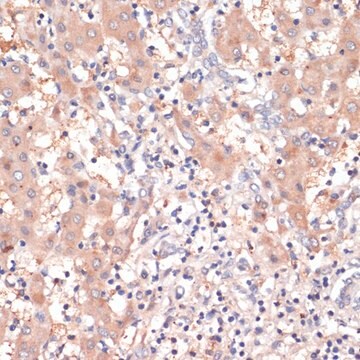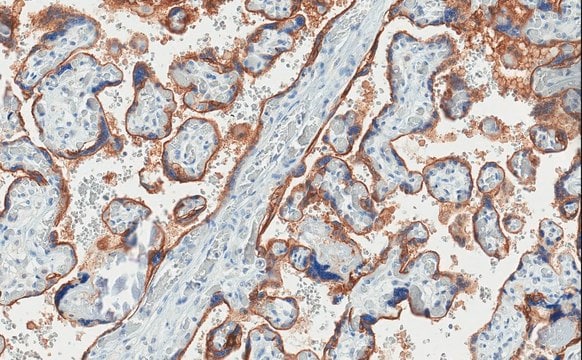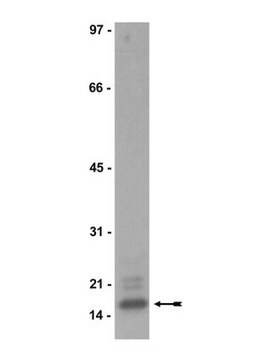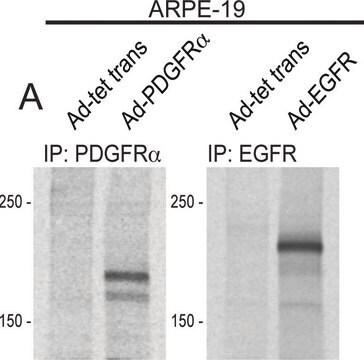05-1047
Anti-EGFR (cytoplasmic domain) Antibody, clone 8G6.2
clone 8G6.2, from mouse
Sinônimo(s):
Receptor tyrosine-protein kinase ErbB-1, avian erythroblastic leukemia viral (v-erb-b) oncogene
homolog, cell growth inhibiting protein 40, cell proliferation-inducing protein 61, epidermal growth factor receptor, epidermal growth factor recepto
About This Item
Produtos recomendados
fonte biológica
mouse
Nível de qualidade
forma do anticorpo
purified antibody
tipo de produto de anticorpo
primary antibodies
clone
8G6.2, monoclonal
reatividade de espécies
rat, mouse, human
técnica(s)
immunocytochemistry: suitable
immunohistochemistry: suitable
immunoprecipitation (IP): suitable
western blot: 1:2,000 using A431 cell lysate (used to detect EGFR)
western blot: suitable
Isotipo
IgG1κ
nº de adesão NCBI
nº de adesão UniProt
Condições de expedição
wet ice
modificação pós-traducional do alvo
unmodified
Informações sobre genes
human ... EGFR(1956)
mouse ... Egfr(13649)
rat ... Egfr(24329)
Descrição geral
Especificidade
Imunogênio
Aplicação
A431 cells were grown, fixed, permeablized, and stained with anti-EGFR, clone 8G6.2
Confocal Immunocytochemistry Analysis:
A431 cells were grown, fixed, permeablized, and stained with anti-EGFR, clone 8G6.2
Immunoprecipitation:
100 μg of A431 whole cell lysate was lysed in RIPA buffer and immunoprecipitated (IP) with 5 μg of Anti-EGFR, cytoplasmic domain, clone 8G6.2
Immunohistochemistry Analysis:
Tissue was stained with anti-EGFR, cytoplasmic domain, clone 8G6.2 at a 1:100 dilution and IHC-Select Detection with HRP-DAB reagents.
Qualidade
Western Blot Analysis:
1:2,000 dilution of this antibody was used to detect EGFR in A431 cell lysate.
Descrição-alvo
Ligação
forma física
Outras notas
Não está encontrando o produto certo?
Experimente o nosso Ferramenta de seleção de produtos.
recomendado
Código de classe de armazenamento
12 - Non Combustible Liquids
Classe de risco de água (WGK)
WGK 1
Ponto de fulgor (°F)
Not applicable
Ponto de fulgor (°C)
Not applicable
Certificados de análise (COA)
Busque Certificados de análise (COA) digitando o Número do Lote do produto. Os números de lote e remessa podem ser encontrados no rótulo de um produto após a palavra “Lot” ou “Batch”.
Já possui este produto?
Encontre a documentação dos produtos que você adquiriu recentemente na biblioteca de documentos.
Nossa equipe de cientistas tem experiência em todas as áreas de pesquisa, incluindo Life Sciences, ciência de materiais, síntese química, cromatografia, química analítica e muitas outras.
Entre em contato com a assistência técnica








